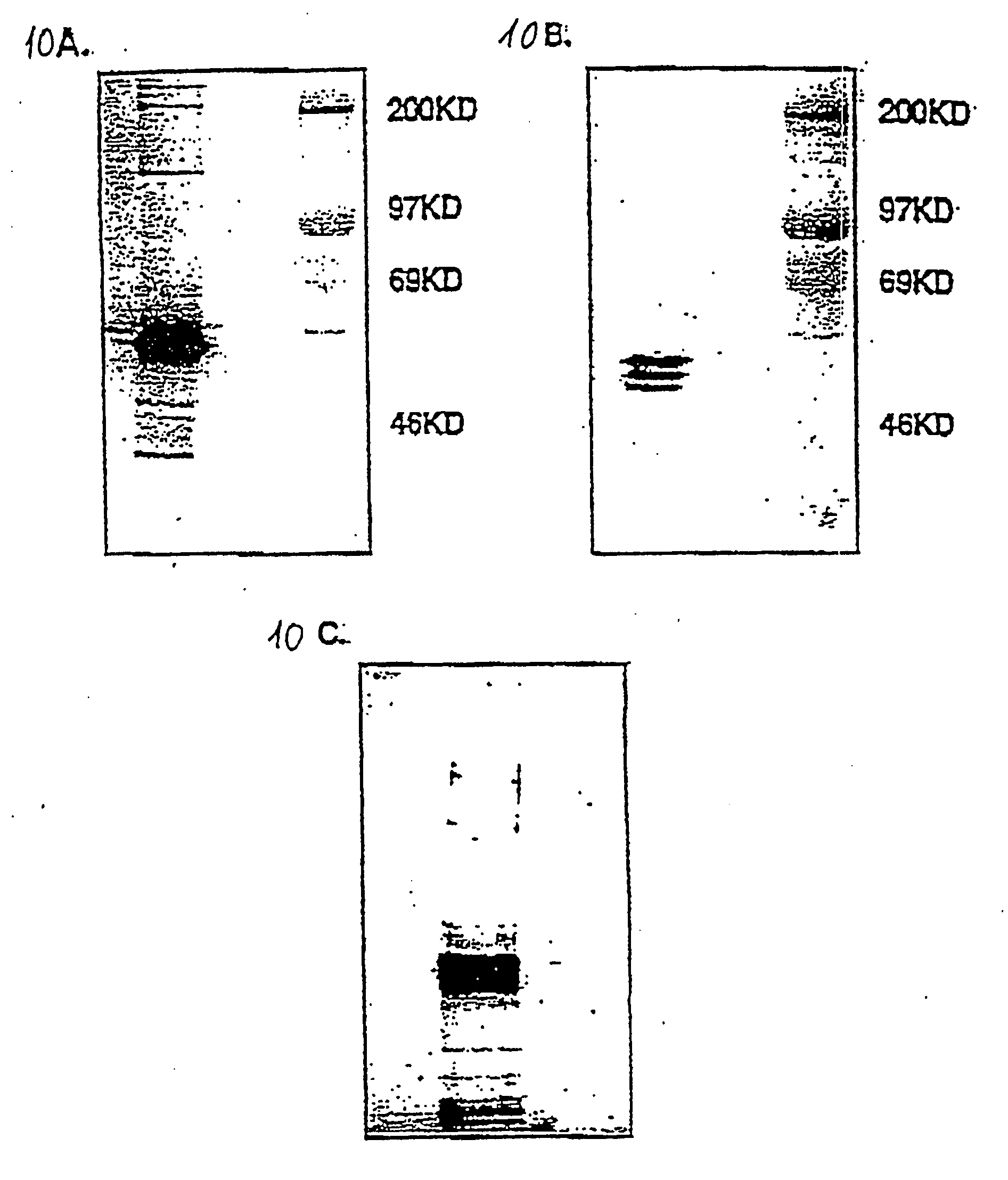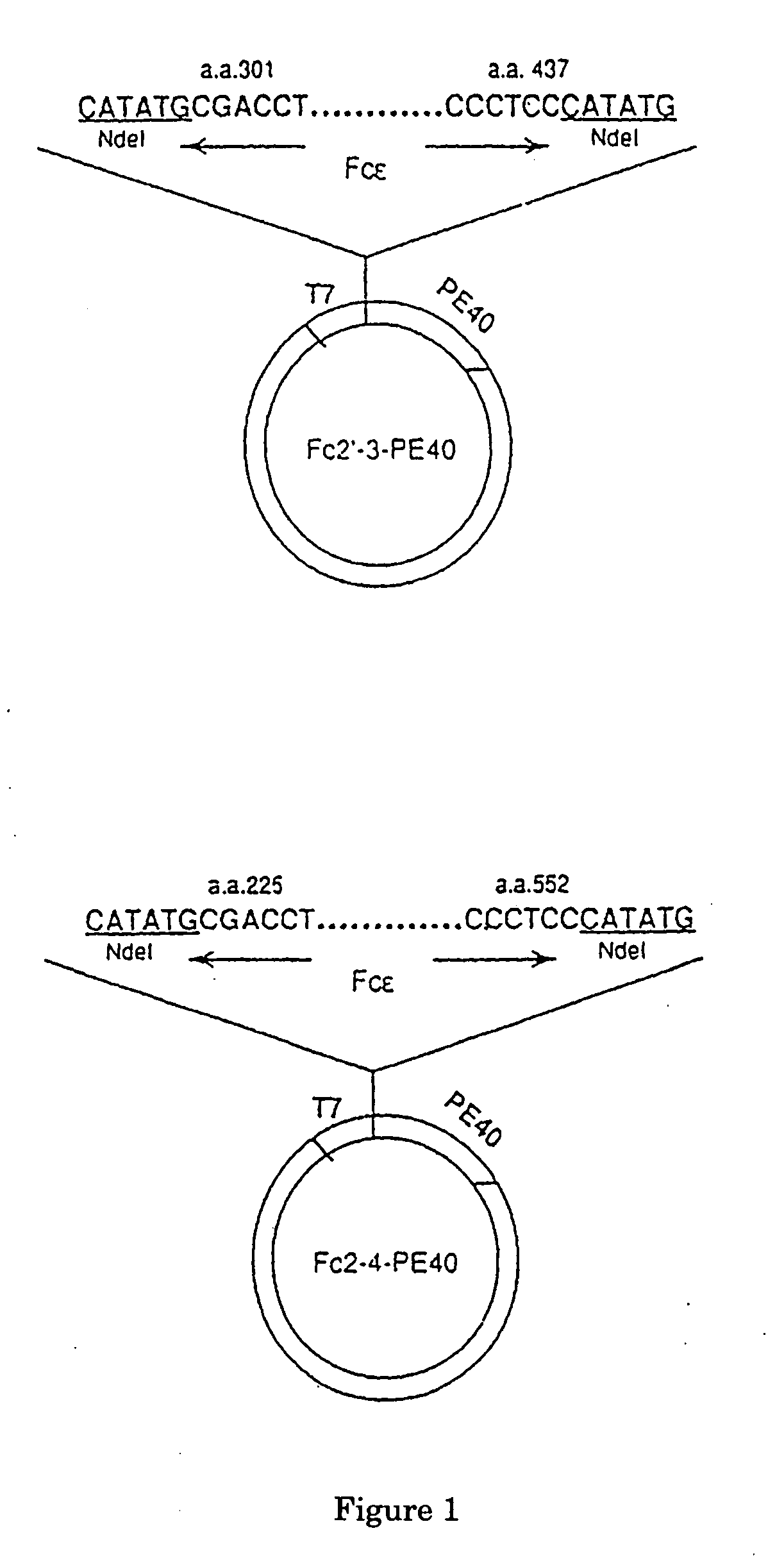FcE-PE chimeric protein for targeted treatment of allergy responses a method for its production and pharmaceutical compositions containing the same
a technology of chimeric protein and targeted treatment, which is applied in the direction of antibody medical ingredients, carrier-bound antigen/hapten ingredients, immunological disorders, etc., can solve the problems of t be used in a prophylactic manner, danger of seizures and arrhythmias, and achieve the effect of efficient killing
- Summary
- Abstract
- Description
- Claims
- Application Information
AI Technical Summary
Benefits of technology
Problems solved by technology
Method used
Image
Examples
Embodiment Construction
[0043]The Fc-PE chimeric protein according to the present invention has a number of advantages over the existing known drugs:
[0044]1. Specificity: Fc-PE is highly specific, affecting the cells (mast cells and basophils) responsible for the release of allergic mediators. As it prevents the allergic attack, it can be of great value as a prophylactic treatment.
[0045]2. Toxicity: As it acts on affector cells and not on it's target organs, Fc-PE is expected to have little, if any, side effects. Moreover, as the receptor is not expressed on stem cells, no damage to bone marrow and immunosuppression are anticipated. Re-institution of a normal physiological state is expected to occur within several weeks after the end of the treatment.
[0046]3. Duration of the effect: Because maturation of mast cells takes several weeks, the effect of Fc-PE is predicted to be long-standing, eliminating the need for frequent administration. Moreover, as in vitro studies indicate that reduction of 80% in cellu...
PUM
| Property | Measurement | Unit |
|---|---|---|
| time | aaaaa | aaaaa |
| total volume | aaaaa | aaaaa |
| temperature | aaaaa | aaaaa |
Abstract
Description
Claims
Application Information
 Login to View More
Login to View More - R&D
- Intellectual Property
- Life Sciences
- Materials
- Tech Scout
- Unparalleled Data Quality
- Higher Quality Content
- 60% Fewer Hallucinations
Browse by: Latest US Patents, China's latest patents, Technical Efficacy Thesaurus, Application Domain, Technology Topic, Popular Technical Reports.
© 2025 PatSnap. All rights reserved.Legal|Privacy policy|Modern Slavery Act Transparency Statement|Sitemap|About US| Contact US: help@patsnap.com



